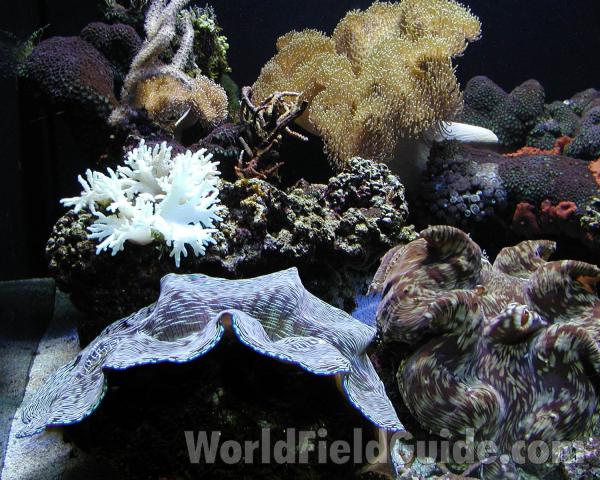| Kingdom
HABITATS (HABITATS) |
 Phylum
HABITATS (HABITATS) Phylum
HABITATS (HABITATS) |
 Class
HABITAT - REEF (HABITAT - PACIFIC MARINE) Class
HABITAT - REEF (HABITAT - PACIFIC MARINE) |
 Common name: Common name: |
 Scentific name: MARINE INVERTEBRATES Scentific name: MARINE INVERTEBRATES |
|

 |
|
AQUARIUM IMAGE
Location: SEATTLE AQUARIUM, WASHINGTON, USA
|
 Species Info: Species Info: |
Biologists generally separate the world into five different main biological areas:
AREA DESCRIPTION
Nearctic North America including Canada and USA
Neotropical Central and South America
African Africa and Madagascar
Palearctic Europe to China and Japan
Indo-Australian India through Malaysia to Australia
Biologists have found that very few species are found in more than one biological area. There are a few northern North American species that are also found in northern Eurasia, and a few Oriental species that are also found in the Indo-Australian region. Generally, however, most species are limited to a single biological area or a portion of a single biological area. Different species need different environments to survive. Some plants are found only on prairies, while others are found only in woodlands. Additional species are found only in bogs, while others are found only on seashores, mountain tops, in valleys, rain forests, or deserts.
Furthermore, certain plant communities support selected groups of different animals. For example, there are prairie animals, mountain animals, and seashore animals. The earth was originally blessed with numerous different environments each with its own interesting and valuable species.
Lately, however, man has begun using many of these different environments for his own pleasure. Prairies have been turned into farmlands, many lakes make ideal places for water sports, and seashores have been turned into recreational destinations or prime homesites. The result is a worldwide loss of habitat diversity. With this loss of habitat diversity, there has been a corresponding loss of various species.
Furthermore, man has intentionally and accidentally introduced many non-native species into different environments. Many of these introductions are able to push out native species. The English sparrow and European starling are two such bird examples. Purple loosestrife and deadly nightshade are two well-known invasive plant species. The net result of this loss of habitat and introduction of non-native species can be called environmental or biological meltdown.
Many scientists believe biological meltdown is more serious than the well-known nuclear meltdown.
|
|
 |
Search Region:
World |
| Species Range: |
 |
 |
| Photos |
| (Click on an image below to display at left) |
 |
|
|

